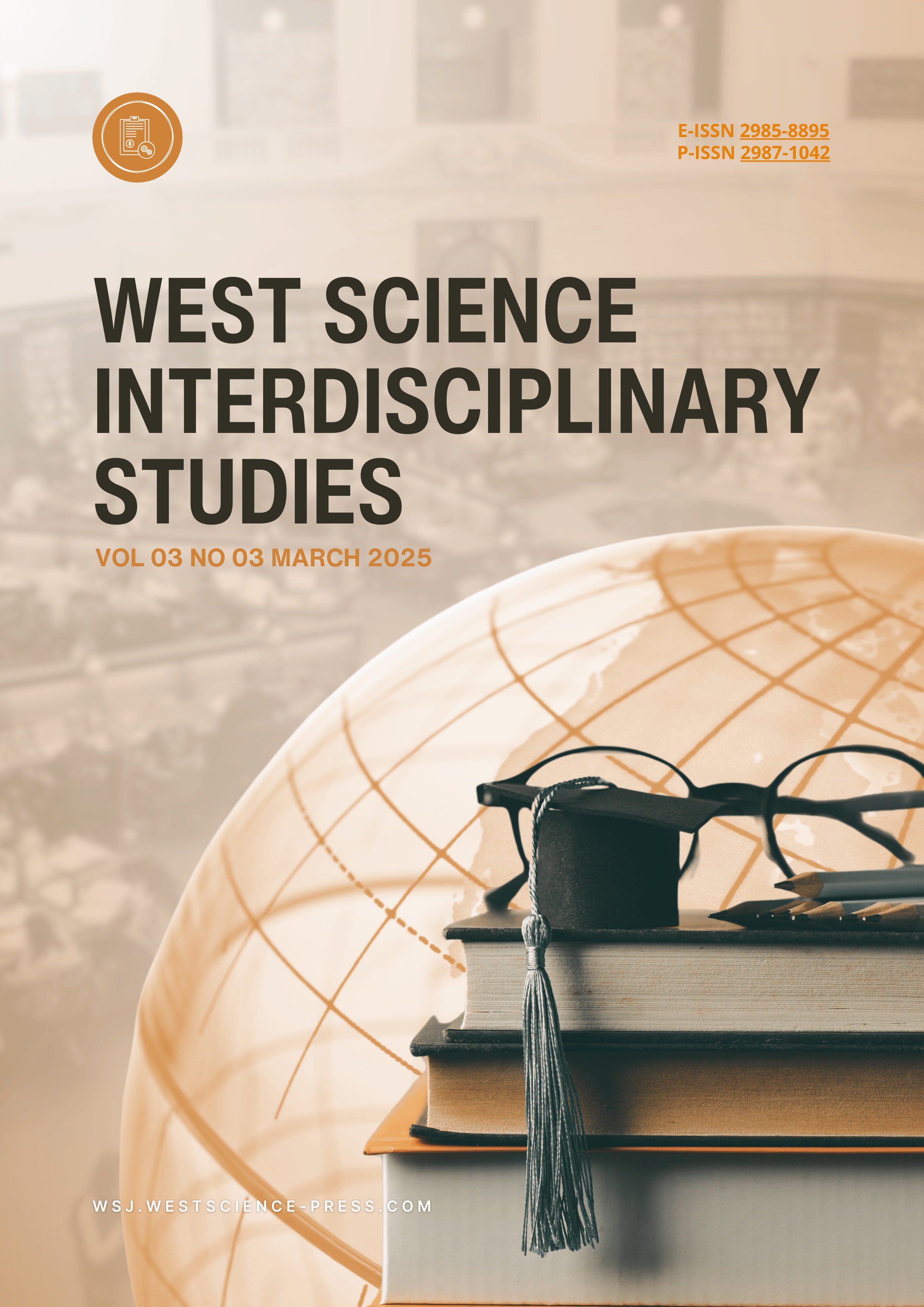A Holistic Approach to Carbon Trading Based on AI, Blockchain, and Satellite Data: A Study on East Java Protected Forest
DOI:
https://doi.org/10.58812/wsis.v3i03.1803Keywords:
Carbon Trading, Artificial Intelligence, Blockchain, Sustainable Forest ManagementAbstract
This study explores a holistic approach to carbon trading by integrating Artificial Intelligence (AI), blockchain technology, and Geographic Information Systems (GIS) to address challenges in managing East Java’s protected forests. AI models were utilized to estimate carbon stocks with high accuracy, while blockchain ensured transparent and secure carbon credit transactions. GIS analysis provided real-time monitoring of forest dynamics and identified high-priority zones for carbon trading. The integrated framework demonstrated significant improvements in efficiency, accuracy, and stakeholder trust compared to traditional methods. The study concludes that this approach is a scalable and effective solution for enhancing carbon trading systems and contributing to sustainable forest management in Indonesia.
References
[1] R. Zhang, “Interaction Between Carbon Emission Derivative Market and Environmental Policy: Theoretical Insights and Future Research Paths,” Adv. Econ. Manag. Polit. Sci., vol. 158, pp. 118–123, Jan. 2025, doi: 10.54254/2754-1169/2025.19759.
[2] Y. Qi, “The Impact of Green Finance Policies on Carbon Emission Trading,” Highlights Business, Econ. Manag., vol. 43, pp. 277–283, Dec. 2024, doi: 10.54097/a2rpg489.
[3] D. A. Rahmawati, H. Haryono, B. Endarto, J. Soraya, and J. Nurani, “The Role of Carbon Trading in Climate Change Mitigation: A Juridical Analysis of Policies and Regulations in Environmental Law in Indonesia,” Easta J. Law Hum. Rights, vol. 3, no. 01, pp. 38–48, 2024.
[4] S. Dixit and S. Bardiya, “Carbon Trading in Developing Economies: Challenges, Opportunities, and Best Practices,” Int. J. Multidiscip. Res., vol. 6, Nov. 2024, doi: 10.36948/ijfmr.2024.v06i06.30282.
[5] L. Kusumaningrum and R. S. Izdihar, “Potential Carbon Storage In The Forest Area Of Mount Merbabu National Park (MMbNP) Resort Selo Central Java,” in IOP Conference Series: Earth and Environmental Science, IOP Publishing, 2022, p. 12055.
[6] B. Mackey et al., “Understanding the importance of primary tropical forest protection as a mitigation strategy,” Mitig. Adapt. Strateg. Glob. Chang., vol. 25, no. 5, pp. 763–787, 2020.
[7] L. F. S. Magnago et al., “Would protecting tropical forest fragments provide carbon and biodiversity cobenefits under REDD+?,” Glob. Chang. Biol., vol. 21, no. 9, pp. 3455–3468, 2015.
[8] K. Matsumoto, T. Hasegawa, K. Morita, and S. Fujimori, “Synergy potential between climate change mitigation and forest conservation policies in the Indonesian forest sector: implications for achieving multiple sustainable development objectives,” Sustain. Sci., vol. 14, pp. 1657–1672, 2019.
[9] A. Anto, F. A. Mappasere, J. Usman, and A. Alyas, “Strategi Kebijakan Konservasi Hutan Tropis Indonesia Untuk Mengatasi Perubahan Iklim: Sebuah Literatur Review,” J. Ilmu Sos. dan Ilmu Polit., vol. 13, no. 3, pp. 521–533, 2024.
[10] M. I. Keskes and M. D. Nita, “Developing an AI Tool for Forest Monitoring: Introducing SylvaMind AI,” Bull. Transilv. Univ. Brasov. Ser. II For. Wood Ind. Agric. Food Eng., vol. 17, no. 2, pp. 39–54, 2024.
[11] F. Luo et al., “Artificial intelligence for climate smart forestry: a forward looking vision,” in 2023 IEEE 5th International Conference on Cognitive Machine Intelligence (CogMI), IEEE, 2023, pp. 1–10.
[12] S. B. Prapulla et al., “Blockchain-Powered Carbon Credit Management: Innovating Sustainability Tracking,” in 2024 8th International Conference on Computational System and Information Technology for Sustainable Solutions (CSITSS), IEEE, 2024, pp. 1–7.
[13] S. A. Kalaiselvan, J. S. P. Venkatesh, A. M. V. Kumar, and K. R. Karthik, “Blockchain Powered Carbon Credit Marketplace,” in 2024 10th International Conference on Communication and Signal Processing (ICCSP), IEEE, 2024, pp. 582–585.
[14] J. Dumont Le Brazidec, P. Vanderbecken, A. Farchi, G. Broquet, G. Kuhlmann, and M. Bocquet, “Deep learning applied to CO 2 power plant emissions quantification using simulated satellite images,” Geosci. Model Dev. Discuss., vol. 2023, pp. 1–30, 2023.
[15] Z. Li and B. Wang, “A Bibliometric Analysis of Carbon Allowances in the Carbon Emissions Trading Market,” Energies, vol. 18, no. 1, p. 57, 2024.
[16] P. O. Okedele, O. R. Aziza, P. Oduro, and A. O. Ishola, “Carbon pricing mechanisms and their global efficacy in reducing emissions: Lessons from leading economies,” 2024.
[17] Y. Shapoval and P. Niedziółka, “Carbon Finance,” 2025, pp. 45–58. doi: 10.4324/9781003499138-4.
[18] S. Van Winckel, J. Simons, S. Lhermitte, and B. Muys, “Assessing the effect of forest management on above-ground carbon stock by remote sensing,” EGUsphere, vol. 2025, pp. 1–22, 2025.
[19] V. P. N. Bharathi et al., “A comparative analysis and prediction of carbon emission in India using machine learning models,” vol. 27, no. 4, 2025.
[20] K. Mohammed et al., “Synthesizing Local Capacities, Multi-Source Remote Sensing and Meta-Learning to Optimize Forest Carbon Assessment in Data-Poor Regions,” Remote Sens., vol. 17, no. 2, p. 289, 2025.
[21] A. K. Jha, A. K. Jha, P. M. Pawar, and R. Muthalagu, “Design of a Carbon Offsetting and Trading Framework Using Blockchain and Internet of Things,” Available SSRN 5082355, 2025.
[22] Y.-C. Tsai, “Enhancing Transparency and Fraud Detection in Carbon Credit Markets Through Blockchain-Based Visualization Techniques,” Electronics, vol. 14, no. 1, p. 157, 2025.
[23] S. Saraji and M. Borowczak, “A blockchain-based carbon credit ecosystem,” arXiv Prepr. arXiv2107.00185, 2021.
[24] E. C. Onukwulu, M. O. Agho, N. L. Eyo-Udo, A. K. Sule, and C. Azubuike, “Advances in blockchain integration for transparent renewable energy supply chains,” Int. J. Res. Innov. Appl. Sci., vol. 9, no. 12, pp. 688–714, 2024.
[25] R. Samphutthanont, W. Suppawimut, P. Kitthitinan, and K. Promsopha, “Carbon Sequestration Assessment Using Satellite Data and GIS at Chiang Mai Rajabhat University: 10.32526/ennrj/22/20240183,” Environ. Nat. Resour. J., vol. 22, no. 6, pp. 574–584, 2024.
[26] J. Huang et al., “Carbon Sequestration and Landscape Influences in Urban Greenspace Coverage Variability: A High-Resolution Remote Sensing Study in Luohe, China,” Forests, vol. 15, no. 11, p. 1849, 2024.
[27] A. Nguyen and S. Saha, “Machine Learning and Multi-source Remote Sensing in Forest Carbon Stock Estimation: A Review,” arXiv Prepr. arXiv2411.17624, 2024.
[28] B. Hosseiny, M. Zaboli, and S. Homayouni, “Forest Change Mapping using Multi-Source Satellite SAR, Optical, and LiDAR Remote Sensing Data,” ISPRS Ann. Photogramm. Remote Sens. Spat. Inf. Sci., vol. 10, pp. 163–168, 2024.
Downloads
Published
Issue
Section
License
Copyright (c) 2025 Haryono Haryono, Arief Rahman, Rifki Fahrial Zainal, Bagus Teguh Santoso, Budi Endarto

This work is licensed under a Creative Commons Attribution-ShareAlike 4.0 International License.
























 Instagram
Instagram 